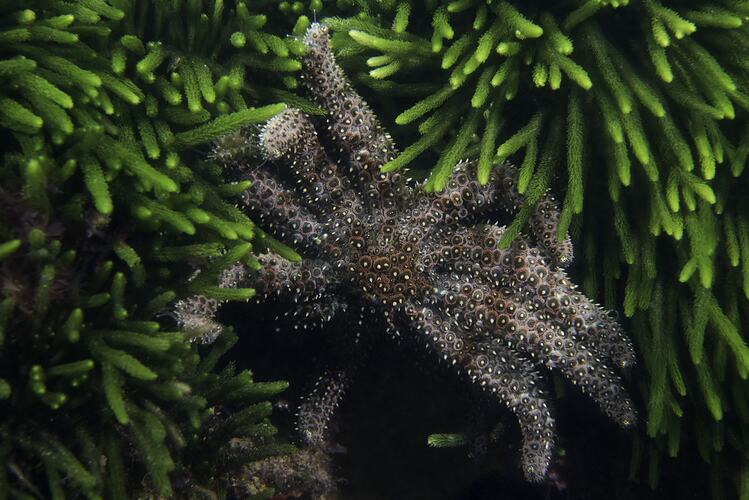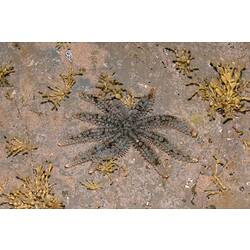General Description
Arms typically 11, frequently of different lengths. Body pattern mottled with combinations of blue, brown, grey, green, cream, orange, red, mauve, white. Centre to arm tip up to 25 cm.
Biology
This is one of the largest seastars in Victorian waters. It has fissiparous reproduction where the animal divides in two to create new individuals. Its arms are usually of different lengths because of regeneration due to lost or damaged arms. Eleven-armed Seastars feed on most animal matter, especially molluscs such as mussels.
Distribution
Southern Australian coasts.
Habitat
Rock and sandy areas, under rocks and in the open, to a depth of 150 m.
More Information
-
Animal Type
-
Animal SubType
-
Brief Id
Usually 11 arms, mottled body pattern, tube feet brown to white-transparent.
-
Colours
Grey, Green
-
Habitats
-
Diet
Carnivore
-
Diet Categories
Invertebrates, Bivalves
-
Endemicity
-
Commercial
No
-
Conservation Statuses
CITES: Not listed, FFG Threatened List: Not listed, DSE Advisory List: Not listed, IUCN Red List: Not listed
-
Depths
Deep ( > 30 m)
-
Water Column Locations
On or near seafloor
-
Taxon Name
-
Scientific Author
Verrill, 1867
-
Common Name
Eleven-armed Seastar
-
Other Names
Seastar
-
Phylum
-
Subphylum
-
Class
-
Order
-
Family
-
Genus
-
Species Name
muricata














